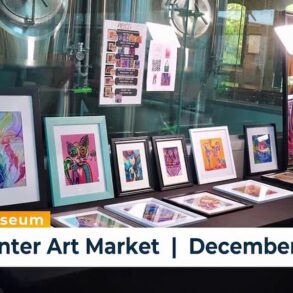Art Market
Osman Can Yerebakan
Sep 30, 2024 4:43PM
As the clock ticked into the early hours of Wednesday morning this June, things were only just heating up at the grand Elisabethenkirche in Basel. Neon lights and DJ Pedro Winter’s booming beats were washing the ornate stained-glass windows and the winged angel busts. The 19th-century Gothic Revival–style church was home to Perrotin’s annual Art Basel party, where the eager huddle cared little about the ungodly hour or impending early morning calls.
The Parisian gallery’s soirée—which operated on a strict QR-coded invitation policy—hosted around 600 guests inside the holy temple. A few blocks away, another international powerhouse, Thaddaeus Ropac, had just wrapped up its traditional dinner at the glitzy second floor of the local favorite Safran Zunft, which toasted a congregation of the global art world’s who’s who.
From Miami to Seoul, Brussels to Hong Kong—wherever collectors, dealers, curators, advisors, and everyone in between lands to shop and talk art—parties are a fundamental fixture of the international art world. Conversations that start at booths or galleries often continue at multi-course seated dinners and martini-soaked festivities.
But these events are more than just casual chin-wags. For both collectors and dealers alike, the parties are a part of the market’s social contract: The dealer signals appreciation and acknowledgment to their clientele, while for the collector, the velvet rope is lifted to a hip circle of the art world’s elite.
Inside the art world party circuit
Thaddaeus Ropac’s Art Basel dinner, 2024. Courtesy of Osman Can Yerebakan.
Perrotin’s Art Basel party,2024. Courtesy of Osman Can Yerebakan.
Parties in the art world are commonplace and varied. A key to standing out on a competitive night is to buy out a gilded institution where scoring a table on even a regular night serves a challenge: Think White Cube’s Frieze New York party earlier this year at Bemelmans Bar, where the wait time on a normal evening is optimistically an hour. Or, why not collaborate with an art world favorite locale from another continent to blend different vibes? For its Art Basel Miami Beach bash last year, Gagosian married Miami with the Mediterranean by joining forces with Positano’s place-to-be spot Le Sirenuse for a dinner themed around the iconic hotel’s blue-washed Franco’s Bar.
Galleries occasionally plan their events with a specific locale, such as White Cube’s Soho Beach House parties during Art Basel Miami Beach, or Perrotin’s annual Basel bash, held this year at the church. Buzzy establishments in major fair cities also evolve into industry musts, such as Ladder Shed in Chiltern Firehouse during Frieze London, Miami’s Euro-chic members-only club Casa Tua in the first week of December, or Armory Week favorite Frenchette. Even certain signature foods usher in familiarity and expectation among invitees. Lehmann Maupin partner Carla Camacho says the barbecue receptions at the gallery’s Seoul space on Hannam Night during Frieze Week have “become a tradition and a must-attend event on people’s itinerary.”
She added: “Every city has its own history and traditions, so you want to understand those and integrate them into the vision for the event.”
In rare and serendipitous occasions, the artists themselves lead their own festivity. Brazilian twin artists OSGEMEOS DJed at NoHo’s sceney establishment ACME to celebrate their Lehmann Maupin show. “Music is a major influence in their practice, so it also offered a very unique experience for our guests,” Camacho explained.
Partying with purpose
OSGEMEOS at ACME, New York, 2024. Courtesy of Lehmann Maupin.
Advertisement
Glasses are raised for a plethora of occasions: a hot talent’s pre-sold solo booth, a knockout grouping out of the gallery roster, or a represented artist’s long-awaited solo at a local museum.
The immediate purpose of orchestrating a potpourri of industry players at a hefty bill might seem opaque from the outside, but a lauded bash can help to make a gallery more than just next day’s talk of the town.
Unlike an instantly sales-forward art fair atmosphere, the after-hours affairs hold a breezier veneer where placement talks blend with vacation plans and dating advice. “You have a window of time to catch up with colleagues and clients and generate new opportunities for your artists,” said Kasmin’s director of communications Molly Taylor, who oversees around 35 events annually for the New York gallery. “It always starts with our goals and objectives for the artists and the brand,” added Camacho.
“There’s a momentum and concentration of energy during the fair weeks that is distinct from other periods in the art world calendar,” said Taylor. “Everyone’s light is on—it leads to a lot of productive, creative conversations and the initiation of future projects.”
After a tolling marathon of sales and networking, the industry players often decompress at gatherings that also promise unexpected connections and deal closures. For New York– and Europe-based art advisor Ludovica Capobianco, the potential to expand her network is part of the charm. “I only have time to meet my clients and visit the works we put holds on during the fair,” she told Artsy. “The parties are great for starting conversations and meeting potential clients when everybody is relaxed.”
Rubbing shoulders with industry figures from across the globe are also valuable touchpoints during packed art fair weeks. While a gallery director’s daytime is reserved for promoting the booth to their mainly existing network, they are perhaps more likely to exchange emails with their tablemates and new faces over negronis. Cocktail hour can also help them finalize an acquisition with a regular client that may have started earlier at the booth.
“Events during art fairs present a rare opportunity when all the key players from around the world are in the same place at the same time, and that’s something we want to capitalize on, especially since we don’t always get to see them,” said Camacho. She considers them “essential tools for nurturing existing relationships and cultivating new ones.”
For Taylor, organizing events in different cities for a gallery with a singular location also means catching up with local friends of the gallery: “In another country or city, we prioritize connecting with our local collectors, as well as curators and museum directors that we have built strong relationships and friendships with over many years of participating in the fair.”
Wining, dining, and dealing
Gallery dinners, which commonly come with a larger bill for the organizer, usually have a rather more clear purpose than a party, which may simply aim to celebrate a booth. Two years ago in Miami, Hauser & Wirth partnered with MOCA Los Angeles, where Henry Taylor had an ongoing exhibition, to take over the South Beach outpost of arguably New York’s most famous Italian restaurant, Carbone. The crowd to savor the iconic spicy rigatoni included Venus Williams.
Capobianco enjoys an intimate dinner’s credibility quality, which helps create a closer bond: “Attending an exclusive event sends a certain message and puts everyone invited into the same category, which makes starting conversations easier than daytime,” she said. These types of events, therefore, play a key role in cultivating a gallery’s image for the evening. “Generally, we have found that seated dinners are much more beneficial for making meaningful connections with our clients since this format allows for more in-depth conversations,” Camacho noted.
Intricacy is essential, whether in compiling a succinct guest list, perfecting the seating chart, or crafting the menu. “You have to be as ambitious and thoughtful about an eight-person dinner as you are with a 200-plus-person party,” Taylor said. She admitted to “get a kick out of the complex orchestration and matchmaking of a seated dinner,” but added that each celebration largely caters for the celebrated honoree’s vision for the night. Camacho agreed: “Each event is different—we have a very strategic, tailored approach for each one.”
Capobianco thinks seated affairs are ideal for establishing deeper connections. “People generally hang out with people they already know at large parties and conversations happen at passing,” she said. “But sitting together with someone for two hours leads to something more meaningful.” She also thinks tables without name tags eliminate the industry hierarchy and encourage guests to initiate “more effortless” dialogues.
Exclusive but not inaccessible
A hard-door policy is not uncommon during wildly attended extravaganzas such as the Venice Biennale or Art Basel in Switzerland, where the number of parties per person can fall slim due to the massive number of visitors and limited venue opportunities.
Seated dinners are inherently more exclusive, and the guest list is strategically crafted between interested collectors, devoted advisors, and select friends. It is not uncommon, however, for galleries to throw parties in which the RSVP link is passed generously around group chats. The key is still to ask around and eventually try the door for a 50/50 gamble. Once inside, though, brave yourself for the combative line for the open bar—why not?—then, turn your free time into gold by networking with your linemates.
And finally, as for the perennial question of whether American or European galleries have better chops in organizing an unforgettable night, Capobianco offers a diplomatic answer: “Europeans are better at dinners because we like to create that effortless cozy vibe, but Americans do throw the best parties.”
Osman Can Yerebakan




